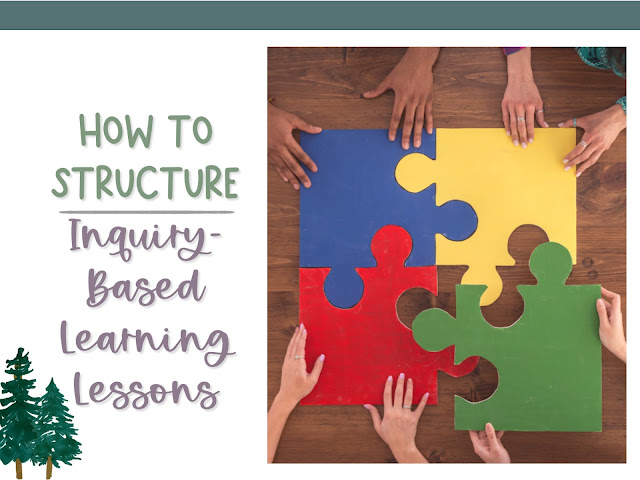How to Structure Inquiry-Based Learning Lessons
Hey, y’all! Last week, we talked about how to plan a large inquiry-based learning or phenomenon-based learning unit. It talked all about the behind the scenes part of the lesson planning, and now it’s time to dive into what the kids see: the inquiry-based learning structures.Picture it: You’ve planned this amazing unit. You’re not sure if you’ve got it all right but you’re excited and ready to jump in and learn with the kids. But what do the lessons actually look like? More specifically, since this is student-centered and student-driven, what does each block of time look like?
This was the part that scared me at first. I am a fantastic planner. (Ever heard the saying “I plan, God laughs? Story of my life there.) But I wasn’t quite sure what this was going to look like with little people. My first go around was in 6th grade English. It’s a lot different than in primary grades.
However, what I learned quickly is that no matter what grade you teach, the structure can stay largely the same. The only thing that changes is the topic and types of questions you ask. (Their questions stay the same. They always ask the hard ones!)
First, we build hype and access schema. We do a QFT or other question or observation gathering lesson. Wonder walks are great for introducing earth science topics. (There you go, that’s day one of your lesson plan!)
Then, we introduce different parts of the topic. We give students access to each part bit-by-bit so they can keep it all straight easier and we don’t overwhelm them. (These are the next several days of your unit. Set aside a day or two to explore each subtopic.)
At the end of each day/learning session, we talk about things that stood out to us, what we learned, and what questions we still have. It’s a perfect way to assess students and get them to synthesize their information.
The structure for these days looks like this:
The actual classroom part with the kids is SO EASY! And rewarding! The biggest part of inquiry-based teaching is the planning. If you can map out your unit ahead of time (and I highly suggest you channel your inner Type A teacher on this one), your days in the classroom with the kids will be so laid back, fun, and exciting, AND they won’t drain the life out of you! It really is the best.
Next week, we’ll talk about projects related to inquiry-based learning and how you can assess students’ learning and understanding of the topics. This is a fun one so be sure to swing by next week.
Have a wonderful week and I’ll talk to you soon.
Stay cozy,




No comments
Post a Comment